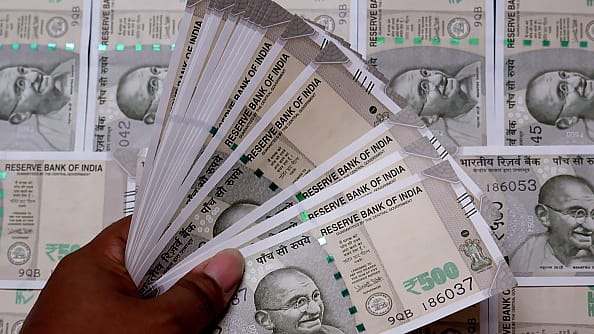India’s external debt up 8.3% to $620.7 bn in FY22
ADVERTISEMENT

India’s external debt rose 8.3% year-on-year to $620.7 billion in the financial year 2021-22 over $573.7 billion as of March-end 2021, the status report on India’s external debt 2021-22 by the finance ministry's department of economic affairs shows. There was a valuation gain of $11.7 billion as of March 2022 due to the appreciation of the U.S. dollar, says the report.
In rupees, it was estimated at ₹47.1 lakh crore as of March 2022, registering a growth of 12.4% over ₹41.9 lakh crore a year ago. "India’s external debt position, both over time and in cross-country comparison, is comfortable and prudently managed," says the finance ministry.
The external debt as a ratio to GDP was 19.9% as of March 2022 from 21.2% a year ago, while the reserves to external debt ratio was 97.8%. While 53.2% of the country's total external debt is denominated in the U.S. dollar, the Indian rupee-denominated debt, estimated at 31.2%, was the second largest.
Foreign currency reserves, as a ratio to the external debt, stood slightly lower at 97.8% as of March-end 2022 than 100.6% a year ago, shows the data.
December 2025
The annual Fortune 500 India list, the definitive compendium of corporate performance, is out. This year, the cumulative revenue of the Fortune 500 India companies has breached $2 trillion for the first time. Plus, find out which are the Best B-schools in India.
The sovereign debt, at $130.7 billion, rose higher by 17.1% over its level a year ago, mainly because of the additional allocation of SDRs (special drawing rights) by the IMF during 2021-22. The non-sovereign debt, on the other hand, grew 6.1% to $490.0 billion on a YoY basis.
India's commercial borrowings, NRI deposits and short-term trade credit are the three biggest constituents of the non-sovereign debt, accounting for 95.2%. While NRI deposits declined by 2% to $139.0 billion, commercial borrowings at $209.71 billion and short-term trade credit at $117.4 billion rose by 5.7% and 20.5%, respectively. The non-financial corporations were the largest borrowers with an outstanding external debt estimated at $250.2 billion as of end-March 2022.
The long-term debt, estimated at $499.1 billion, constituted the largest chunk of 80.4%, while the short-term debt, at $121.7 billion, accounted for 19.6% of the total. The short-term trade credit was predominantly in the form of trade credit financing imports.
The U.S. dollar appreciated vis-à-vis the Indian rupee and major currencies such as yen, SDR, and Euro as of end-March 2022 over the level a year ago, leading to valuation gains at $11.7 billion, says the ministry data. The Indian rupee is at 79.79 against the U.S. dollar currently. According to the ratings agency Moody's Investors Service, the domestic currency has depreciated around 7% against the US dollar during the year-to-date period.
Notably, from a cross-country perspective, India’s external debt is modest, occupying 23 the position globally, shows the FinMin data. In terms of various debt vulnerability indicators, India’s sustainability also was better than the low-and-middle-income countries as a group and vis-à-vis many of them individually, the ministry adds.
